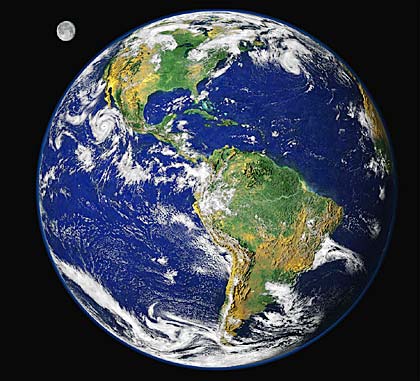Pre-Columbian Lecture Notes
|
|
I. Two basic guiding ideas:
1.
2.
Iberian culture dominates in terms of conquerors, language, religion, cultural patterns,
humanities, etc.; from 16th century, Spanish Renaissance and Baroque are
primary influence until 20th century (these balanced
ideas will
dominate during the course)
II. General notes on Latin American
Indians (Native Americans / Indigenous Peoples / First Nations peoples)
1.
More than 100,000,000 Indians in
2. Indian majorities in Guatemala,
Ecuador, Perú, Bolivia (2016)
3.
Strong Indian minorities in México, Colombia, Venezuela
4.
Mestizo majorities in:
5.
Native Americans in
6.
Humanities consciousness of Indians in
III. Latin American pre-Columbian
civilizations
1.
By 900 C.E., Mayas (
2.
By 1000, Toltecs (central
3.
After 1300, Aztecs and Incas rise
4.
Mayas and Incas had writing systems; Incas on textile knots; Mayas on codices,
steles, carved stones, pottery, painted walls, tombs, temples: from Titcaca to
Teotihuacan.
5.
There were major and advanced civilizations all over the
IV. Basic groups of Indians
1.
Hunting and gathering tribes: East Brazil, Pampas, Patagonia,
2.
Tropical forest tribes: Amazon,
3.
4. Andean civilization:
Araucanians (Chile), Chibchas (Colombia), Incas (Peru, Ecuador)
5.
Mesoamerica: Central Mexico, Yucatán, Guatemala
V. Pre-Columbian humanities
1.
High value placed on craft skills
2.
Art plus engineering and design
3.
Magico-religious objects in art plus reality (prefigures 20th
century Magical Realism)
4.
Culture and humanities: expression of mythic world, which dominated all life
5.
Art: human's relationship to gods; few "periods",
"movements"; no constant revision, no constant change (for change's
sake); decorative elements always repeated (like medieval
6.
Most Náhuatl (Aztec) and Quechua (Inca) poetry: theogony (
7.
Art: image (stone or poetry) = god, = thing represented (not just a symbol)
8.
Myth is generally or mainly the only reality
9.
Result: much abstraction; little variations or interpretations (but, realism
not absent)
10.
Artists = artist-priests; art practiced by initiates, priests, acolytes
11.
Art for public indoctrination, instruction
12.
Goal of pre-Columbian realism: make invisible visible (roughly akin to Spanish
and Latin American baroque art)


